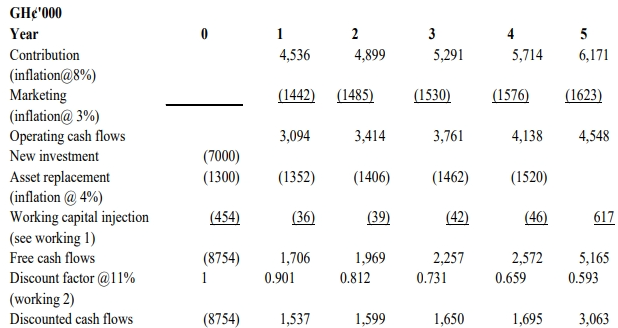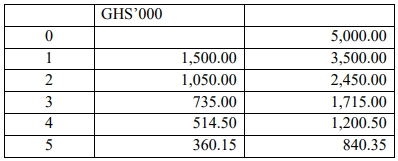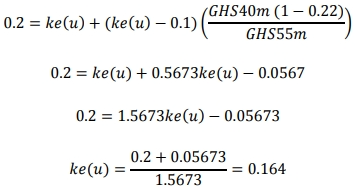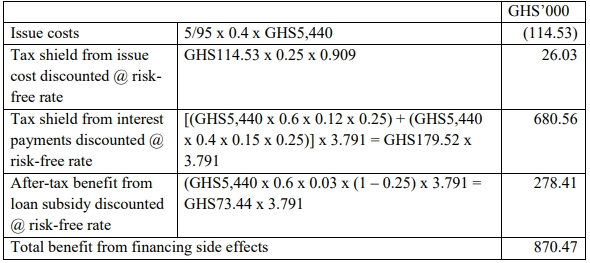- 12 Marks
Question
A company plans to invest GH¢7 million in a new product. Net contribution over the next five years is expected to be GH¢4.2 million per annum in real terms. Marketing expenditure of GH¢1.4 million per annum will also be needed. Expenditure of GH¢1.3 million per annum will be required to replace existing assets, and additional investment in working capital, equivalent to 10% of contribution, will be needed at the start of each year. Working capital will be released at the end of the project. The following inflation forecasts are made for the next five years:
- Contribution: 8%
- Marketing: 3%
- Assets: 4%
- General prices: 4.70%
The real cost of capital is 6%. All cash flows are in real terms. Ignore tax.
Required:
Calculate the Net Present Value (NPV) of the project and appraise whether it is a worthwhile project.
Answer

The Net present value = -8754 + 1,537+1,599+1,650+1,695+3,063 = 790,000
The positive NPV shows the project is worthwhile.

W2, cost of capital
(1+i)=(1+r)(1+h)=(1+0.06)(1+0.047)=1.11, hence 11%
- Topic: Discounted cash flow techniques
- Series: NOV 2016
- Uploader: Joseph





